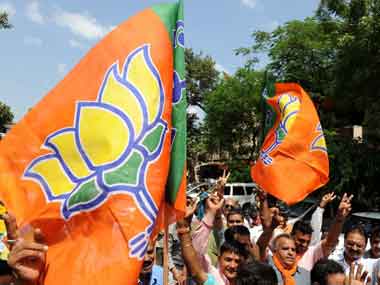The story of the migration of 300-odd Hindu families from Muslim-dominated Kairana township of Western Uttar Pradesh is deliberately picked by the BJP’s national executive at Allahabad to polarise the electorate. After its massive victory that ensured the NDA coalition to win 73 out of 80 Lok Sabha seats in 2014 General Elections, the BJP seems to have discovered polarisation as its ticket to win the state Assembly Election in 2017. Since the 2014 Lok Sabha polls held in the backdrop of a series of communal clashes in Muzaffar Nagar, Baghpat, Shamli and Ghaziabad, the party’s victory is largely attributed to the strategy of polarising the electorate on communal lines. On the face of it, Kairana’s narrative appears to be highly exaggerated and twisted out of context to suit the BJP’s determined attempt to mobilise the electorate on religious lines. There is little doubt that in all over the state cross-migration of Hindus living in Muslim locality or Muslims living in Hindu locality, pockets of ghettoisation have multiplied manifold. [caption id=“attachment_2829308” align=“alignleft” width=“380”] Representational image. AFP[/caption] But it would be naïve to attribute it communalism alone. The successive riots in the state over the three decades and the state’s inability to punish the guilty and often colluding with them have emboldened criminals in the guise of caste and religion, to have a free-run and set up a parallel state. Obviously, the ghettoisation of the state began at furious pace after the demolition of the Babri Masjid in 1992. In this context it would be instructive to recount the story of emergence of a BJP member of municipal corporation in Kanpur Kala Bachcha as the most intriguing personality in early nineties.. He figured as the most dreaded leader of criminals who attacked Muslims in Babupurwa locality. Yet Hindutva forces feted him as a savior. The story of his criminal escapades entailing attacks on Muslims triggered a massive ghettoisation of Muslims. In certain urban localities where Muslims chose to migrate from their old houses, the organised attacks by Kala Bachcha and members of his gang drove almost all of them to return to their ghettos. In February 1994, Kala Bachcha was killed by his rivals, mostly Muslim gangsters, that triggered yet another bout of communal rioting and killing. In his study on emergence of Kala Bachcha, noted political scientist Paul R Brass, known for conducting extensive field surveys on communal situation in North India, has aptly summarised that a complicit and ineffectual state often facilitated the Kala Bachcha phenomenon. This is further confirmed by findings of surveys conducted by successive UP government in the 1990s to assess demographic profiles of new urban centres created by the city’s development authorities. The question was: Do the areas with modern amenities contain mixed population? Do Hindus and Muslims live in peace in these new urban centres? The surveys conducted by senior government officials invariably pointed out that a section of aspiring Muslim middle-class which shifted its based from walled areas to newly-developed urban clusters, but found themselves quite vulnerable due to successive riots and returned to their old habitats ie ghettos of old and unplanned areas. This assumes significance in view of the fact that the BJP’s national executive in Allahabad has particularly picked the issue of “forced migration” of Hindus from a Muslim-dominated Kairana block of West UP. But those know the state of affairs in UP would confirm that the story of Kairana conforms to a pattern in the state. Since the Babri demolition, ghettoisation of Muslims all over the state has become an accepted fact. A survey conducted one of the senior IAS officer in UP in 1992 pointed out that in most of these ghettos, the population has been bursting at seams. For want of space, people sleep in shifts, the study pointed out. Kairana however presents a different facet of the same problem. Barely 150 kilometres away from National Capital, Kairana is known for its agricultural prosperity and lawlessness. Criminal gangs aligned on caste lines ruled the region and demand extortion. Though largely surrounded by a Hindu population, Kairana’s criminal gangs are still wedded to their primordial loyalties and sustain on political patronage. A Gurjar-Muslim would have greater bonding with Gurjar Hindu than a mule jat (a jat converted to Islam). In this complex social tapestry of West UP, Jats and Gurjars largely hold the sway and marginalise traders or intermediary castes. Police officers posted in West UP admit that though some of Hindu families in Kairana had decided to migrate from the area, their decision was guided more by deterioration of law and order than any other reason. The state has been rendered ineffectual as various criminal groups have been operating with impunity all across Kairana , Shamli, Baghpat and Meerut and demand protection money. Apparently the Kala Baccha phenomenon has taken in its grip the entire state.
The story of the migration of 300-odd Hindu families from Muslim-dominated Kairana township of Western Uttar Pradesh is deliberately picked by the BJP’s national executive at Allahabad to polarise the electorate
Advertisement
End of Article


)
)
)
)
)
)
)
)
)



